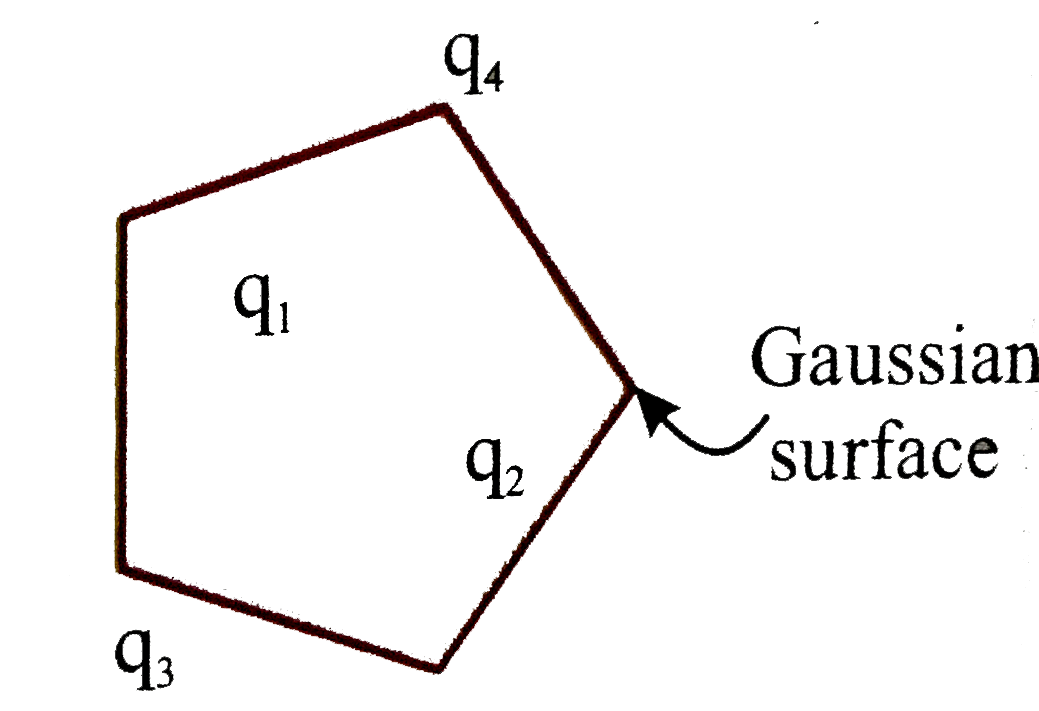Assertion:- In a given situation of arrangement of charges, an extra charge is placed outside the Gaussion surface. In the Gauss Theroem
∮→Ed→s=Q∈ε0Q∈ remains unchanged whereas electric field →E at the site of the element is changed.
Reason:- Electric field →E at any point on the Gaussian surface is due to inside charge only.
Statement - 1 is true, Statement - 2 is ture and statement - 2 is correct explanation for statement - 1.
Statement - 1 is true, Statement - 2 is true and statement - 2 is NOT correct explanation for statement - 1.
Statement - 1 is true, statement - 2 is false.
Statement - 1 is false, statement - 2 is true.
The correct Answer is:C
Step by step video, text & image solution for Assertion:- In a given situation of arrangement of charges, an extra charge is placed outside the Gaussion surface. In the Gauss Theroem ointvecEdvecs=(Q_(in))/(epsilon_(0))Q_(in) remains unchanged whereas electric field vecE at the site of the element is changed. Reason:- Electric field vecE at any point on the Gaussian surface is due to inside charge only. by Physics experts to help you in doubts & scoring excellent marks in Class 12 exams.
Updated on:21/07/2023Topper's Solved these Questions
- ELECTROSTATICS-IIBook:MOTIONChapter:ELECTROSTATICS-IIExercise:Exercise 1 (Section C - Spheres Problem, Electrostatics pressure)
Explore 16 Videos
- ELECTROSTATICS-IIBook:MOTIONChapter:ELECTROSTATICS-IIExercise:Exercise 1 (Section D - Plates)
Explore 2 Videos
- ELECTROSTATICS-IIBook:MOTIONChapter:ELECTROSTATICS-IIExercise:Exercise 1 (Section A-Questions Based on electric flux for various configuration, Question on solid angle concept, Gauss law Based Questions)
Explore 16 Videos
- ELECTROSTATICS - I Book:MOTIONChapter:ELECTROSTATICS - I Exercise:EXERCISE - 4 (Level -II) PREVIOUS YEAR - JEE ADVANCED
Explore 13 Videos
- ERRORS , THEORY Book:MOTIONChapter:ERRORS , THEORY Exercise:EXERCISE 4 (LEVEL -II)
Explore 10 Videos
Similar Questions
Knowledge Check
If q is the charge per unit area on the surface of a conductor, then the electric field intensity at a point on the surface is
A(qε0) normal to surfaceB(q2ε0) normal to surfaceC(qε0) tangential to surfaceD(q2ε0) tangential to surfaceAssertion : With the help of Gauss's theorm we can find electric field at any point.
Reason : Gauss's theorem can be applied for any type of charge distribution.AIf both Assertion and Reason are correct and Reason is the correct explanation of AssertionBIf both Assertion and Reason are correct but Reason is not the correct explanation of AssertionCIf Assertion is true but Reason is falseDIf Assertion is false but Reason is trueAssertion: Four point charges q1,q2,q3 and q4 are as shown in Fig,The flux over the shown Gaussians surface depends only on charges q1 and q2
Reason:Electric field at all points on Gaussians surface depends on any charges q1 and q2
 ABoth (A) and (R) are true and 'R' is the correct explanation of A.BBoth A and R are true and R is not the correct explanation of AC(A) is true but (R) is falseD(A) is false but (R) is true
ABoth (A) and (R) are true and 'R' is the correct explanation of A.BBoth A and R are true and R is not the correct explanation of AC(A) is true but (R) is falseD(A) is false but (R) is true
If the radius of the Gaussion surface enclosing a charge q is halved, how does the electric flux through the Gaussion surface change?
View SolutionAssertion: Two charged metallic surfaces parallel to each other always carry equal and opposite charges.
Reason: Gauss's law: ∮→E⋅d→S=qInε0
View SolutionSurface subtends a solid angle of π on a point charge +q. Electric flux due to point charge, associated with the given surface, is
View SolutionA : We may have a Gaussian surface in which less number of field lines enter and more field lines come out.
R : The electric field E in the Gauss's law is only due to the enclosed charges.
View SolutionIf net charge enclosed by a Gaussian surface is zero, then
Assertion :- →E at any point on Gaussian surface is 0.
Reason :- No net charge is enclosed by Gaussian surface, so E = 0
View Solution

